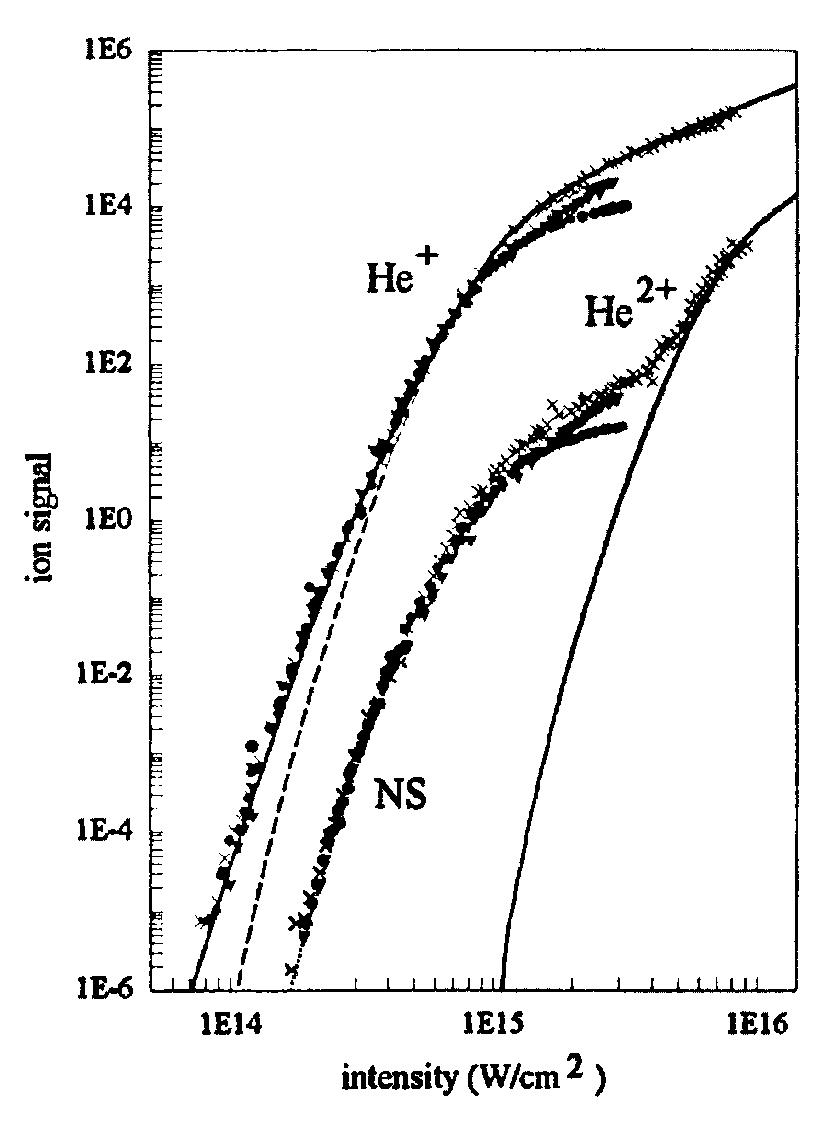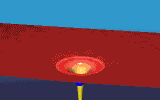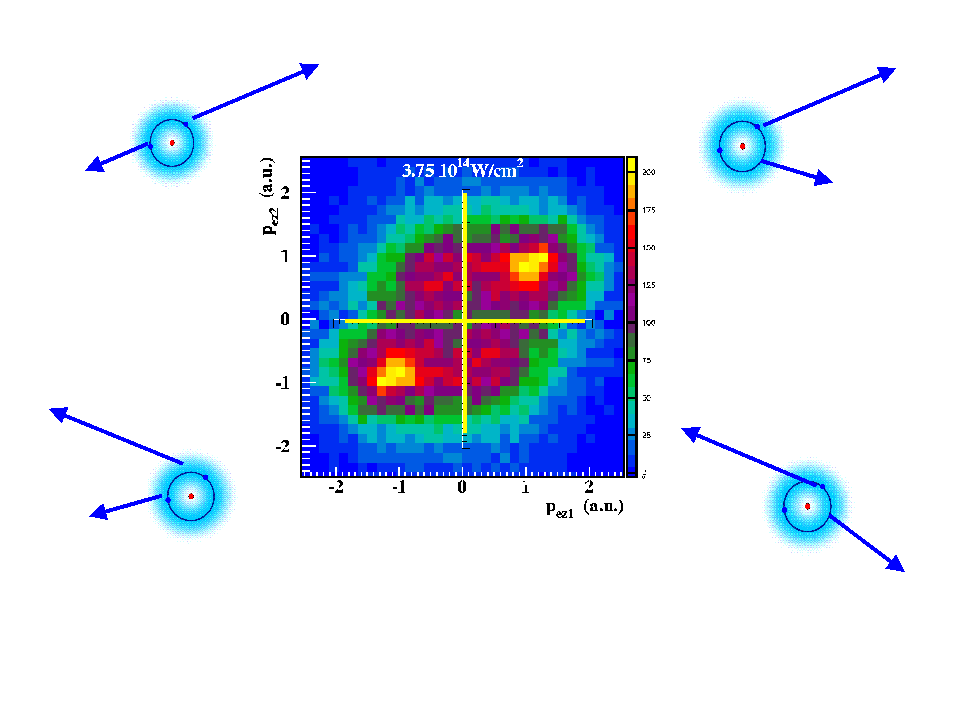Atoms and Molecules in Strong Laser Fields
|
History In 1999 we entered the field of intense laser-atom physics with an experiment conducted at Marburg university in cooperation with the group around Harald Giessen (formerly at IAP Uni Bonn now http://www.pi4.uni-stuttgart.de/NeueSeite/index.html) who is now teaching at the university of Bonn. In this experiment we examined the well known knee structure of the intensity dependent double ionization rate in helium and argon.
For the first time we could prove that the origin of the knee structure, the so called nonsequential contribution to the double ionization, is in fact due to the correlated emission of two electrons as being suggested years ago.
The underlying process is the socalled recollision or rescattering process, which has been suggested first in 1993 by P.Corkum. In this picture the first electron leaves the atom via tunnelionzation predicted by semiclassical ADK Theory. The electron is born with zero velocity and feels the pull of the oscillating laser field, which forces a oscillatory motion on the electron. Depending on the phase of the laser field at the instant of ionization the electron may return to its parent ion. Upon returning to the parent ion the electron might have picked up so much energy that it can release a second electron. Consequently both electrons would be released to the same side of the ion impairing a measurable momentum on the ion as can be seen in our data.
Contrary in the sequential process the electrons are released more or less at random to either side leaving the parent ion in average at rest.
This process is also of crucial importance in the understanding of above threshold ionization (ATI) and high harmonic generation. Especially the latter one has recently attracted a lot of attention as it may be used to generate laser pulses in the attosecond time regime.
publications: |



